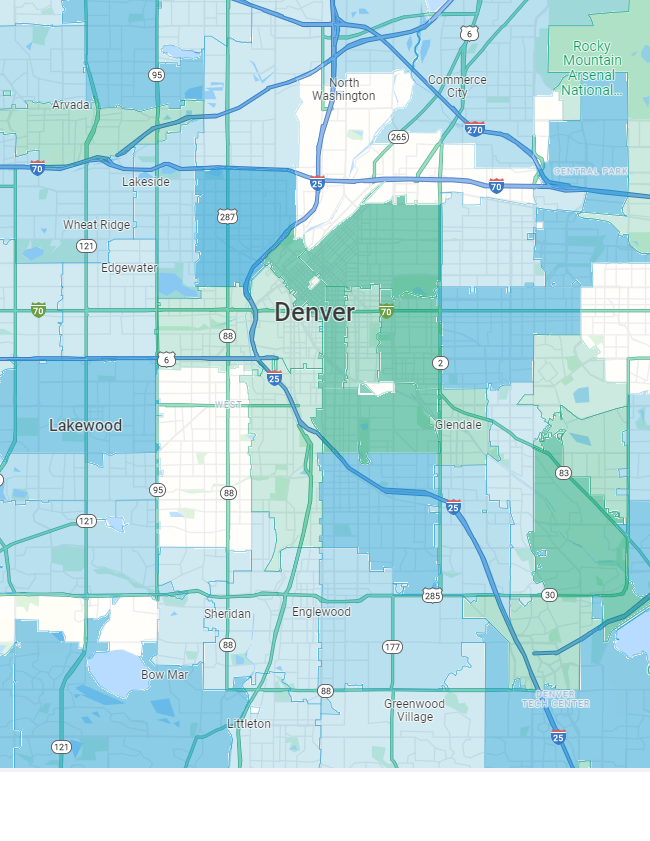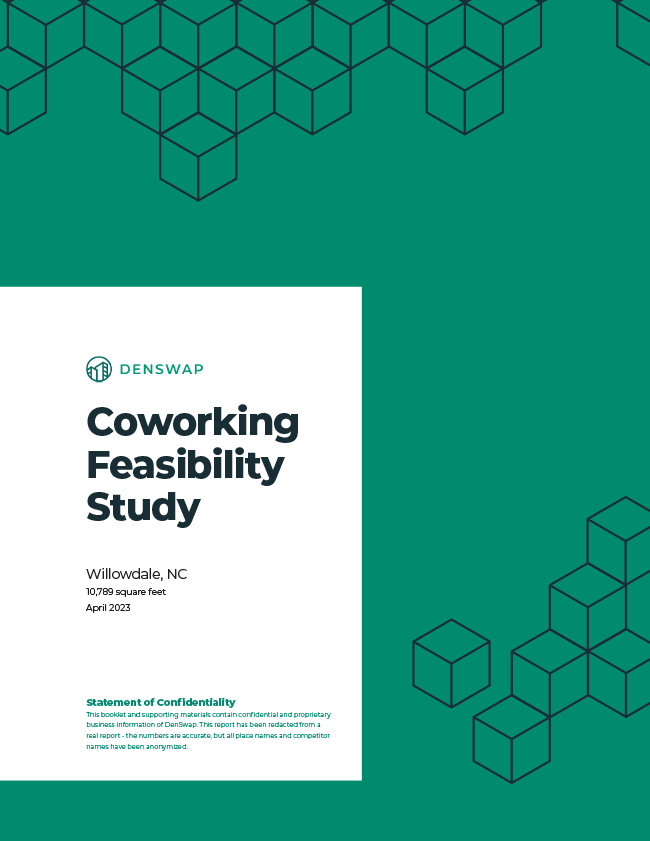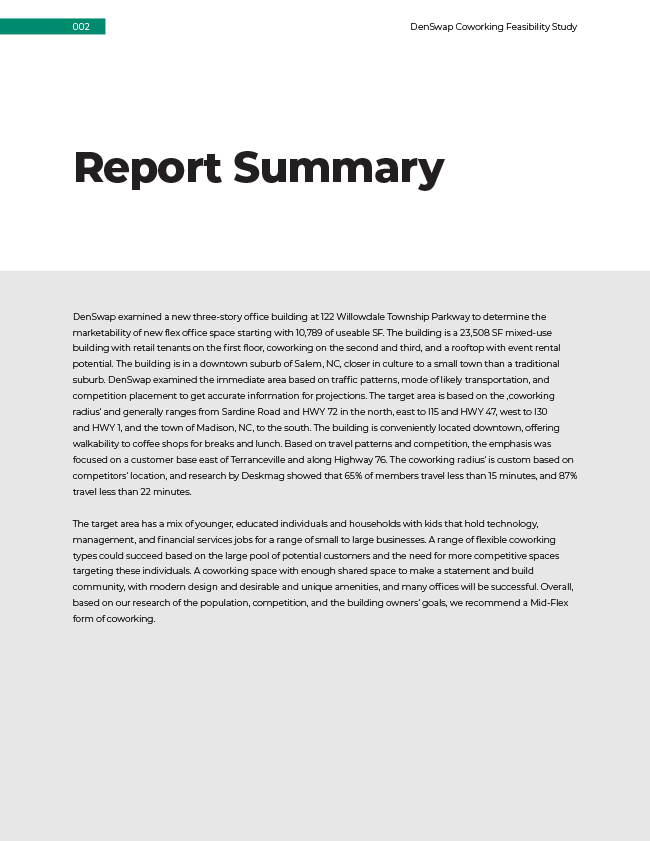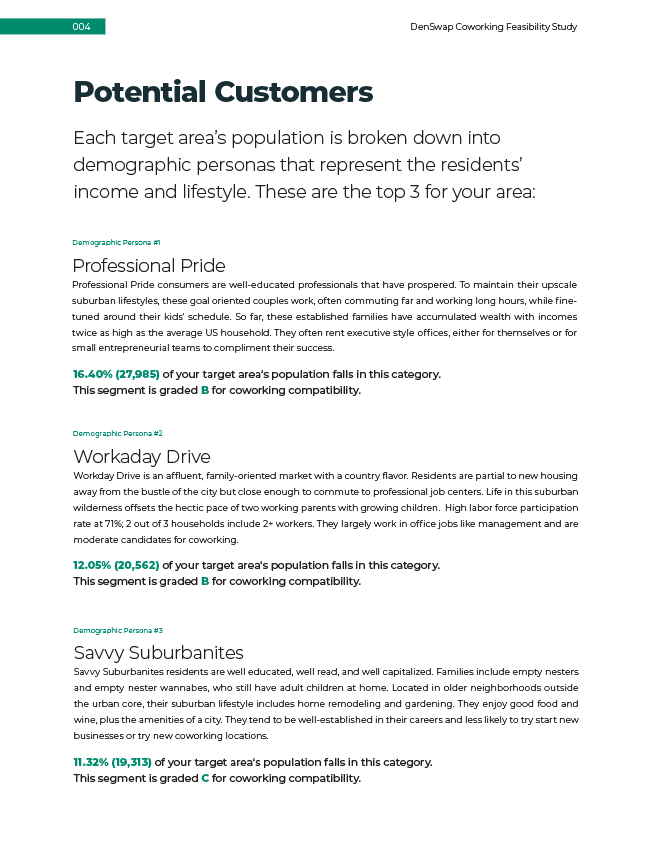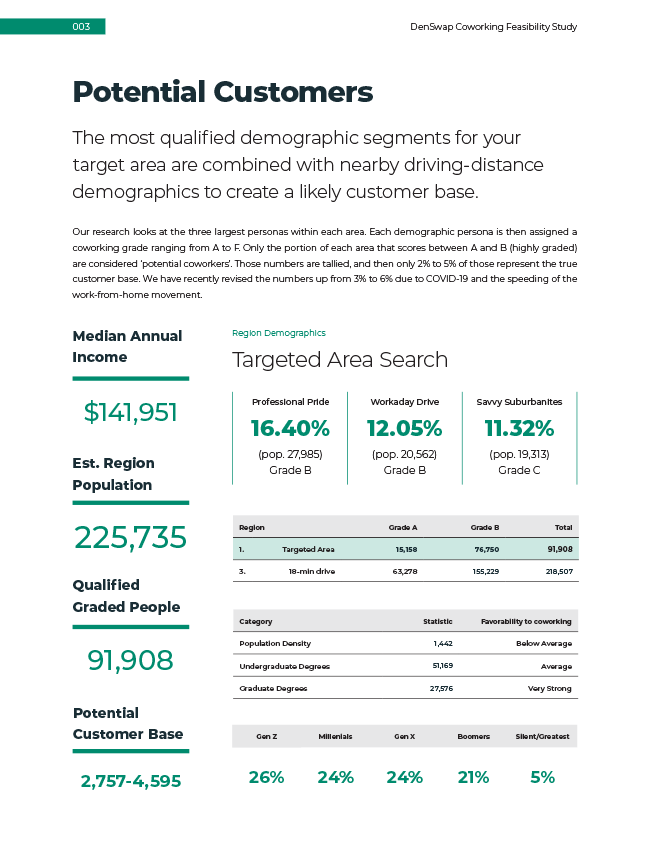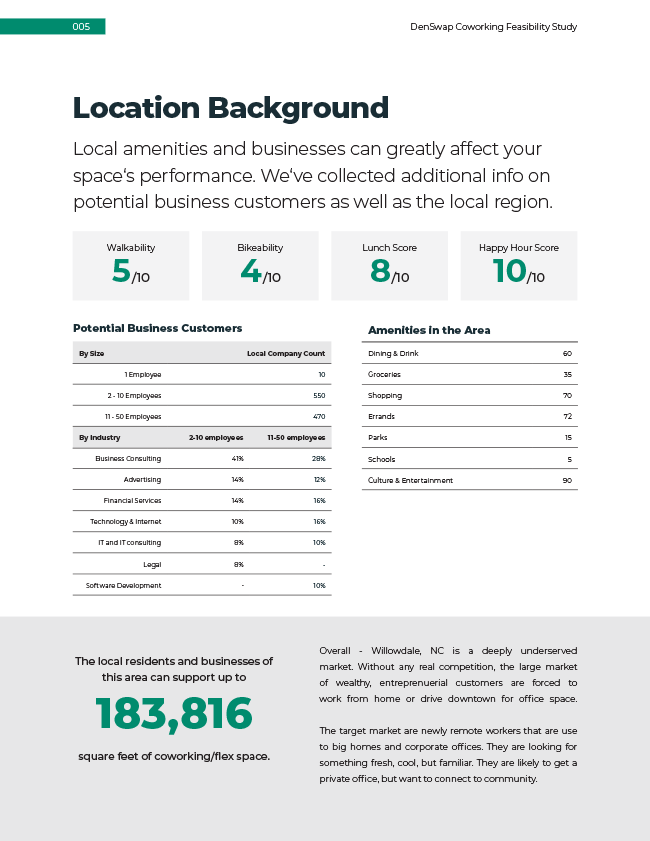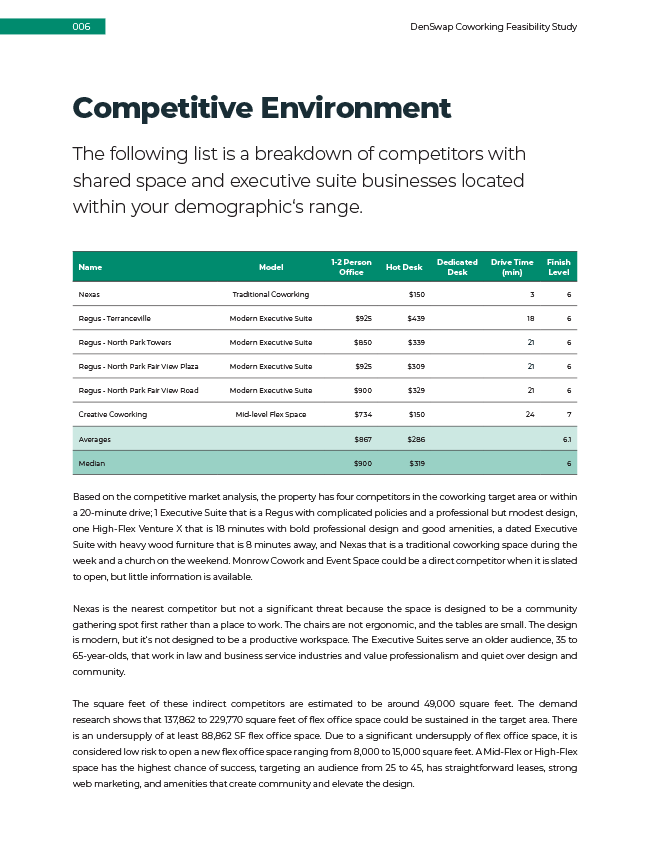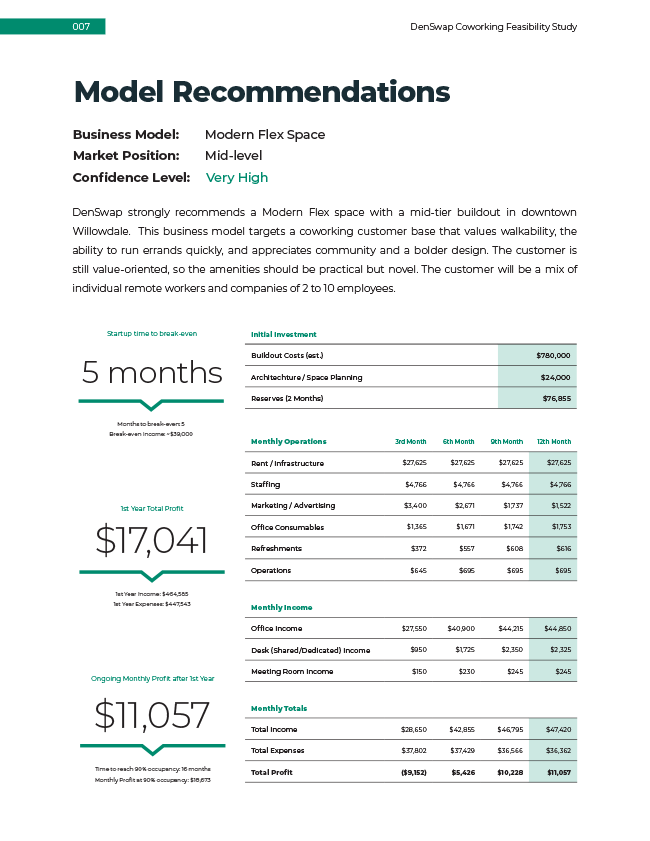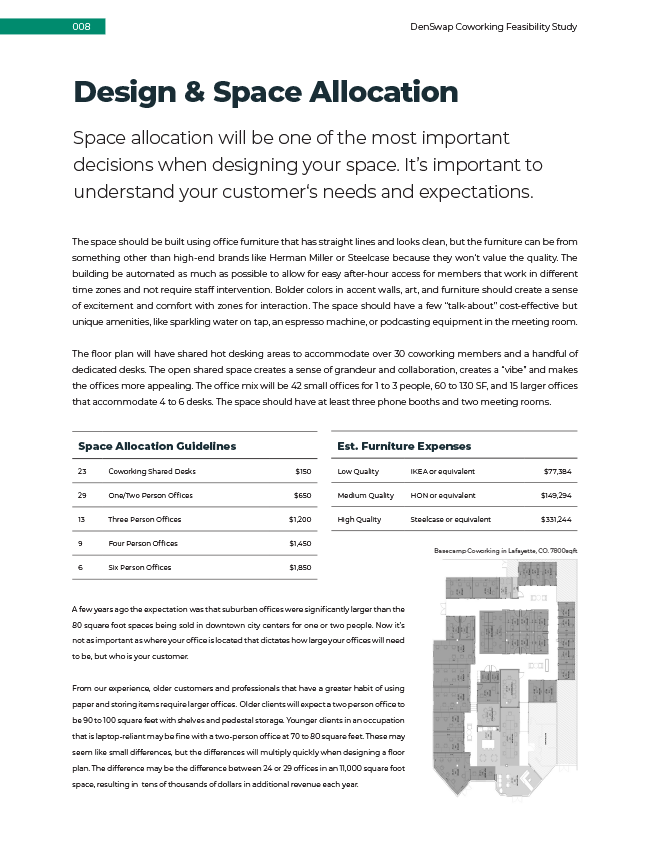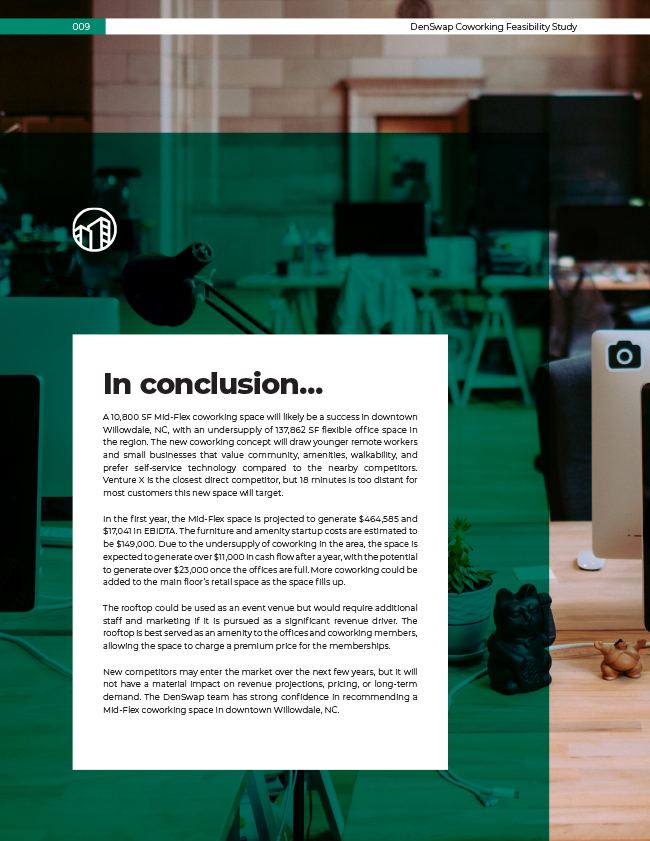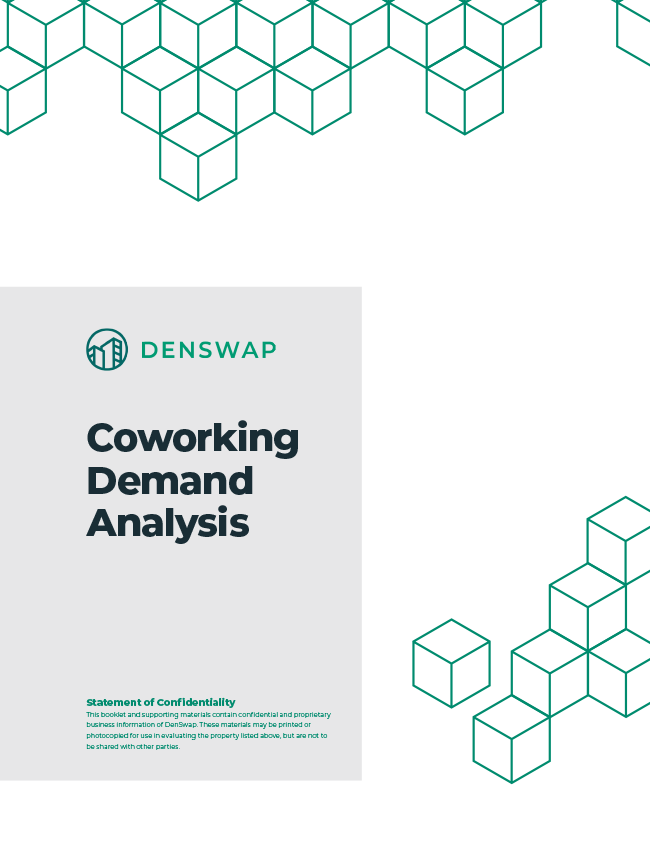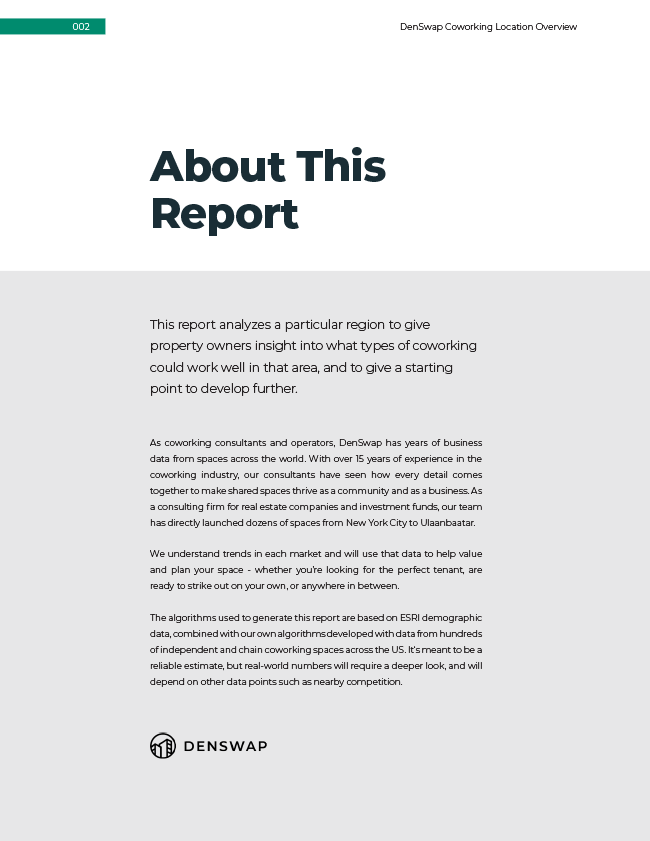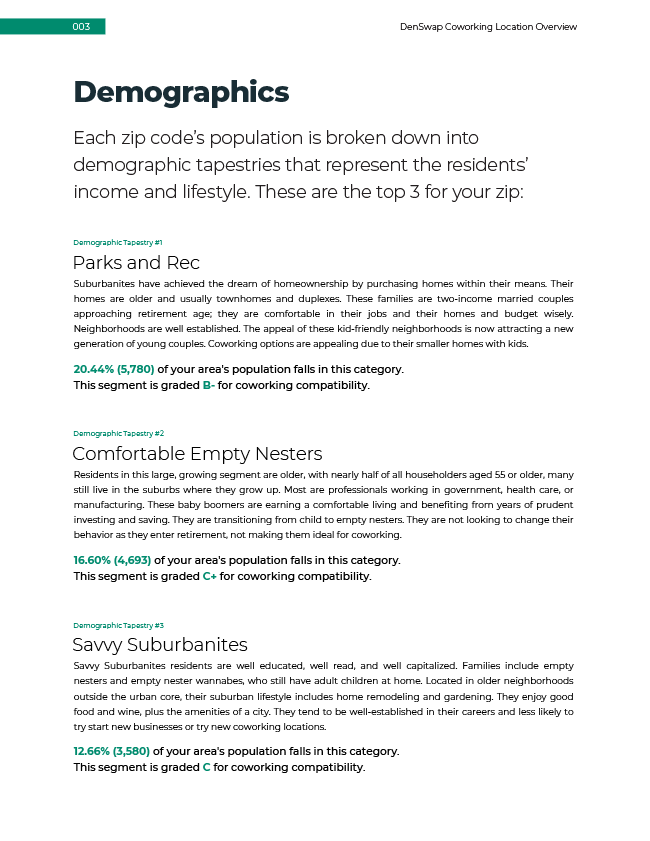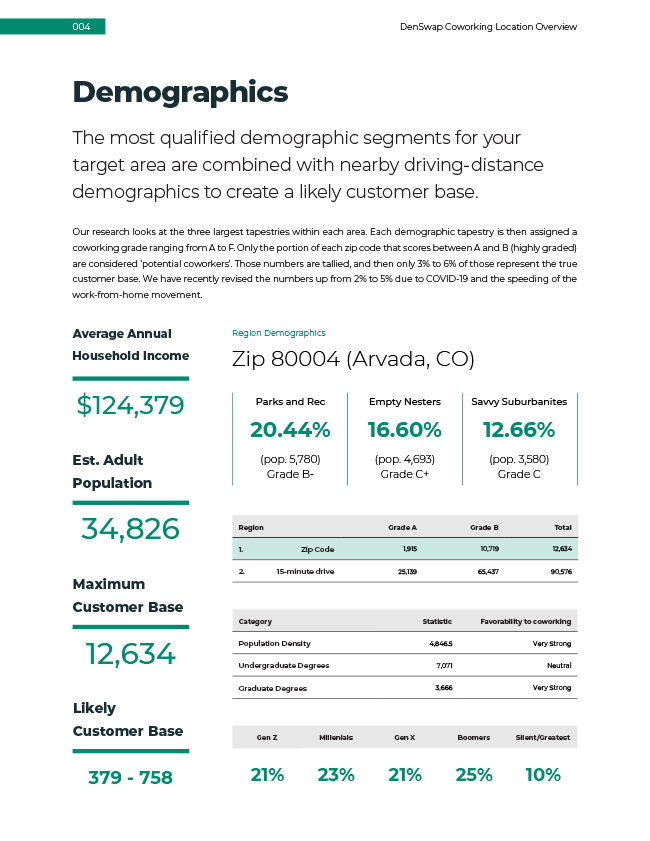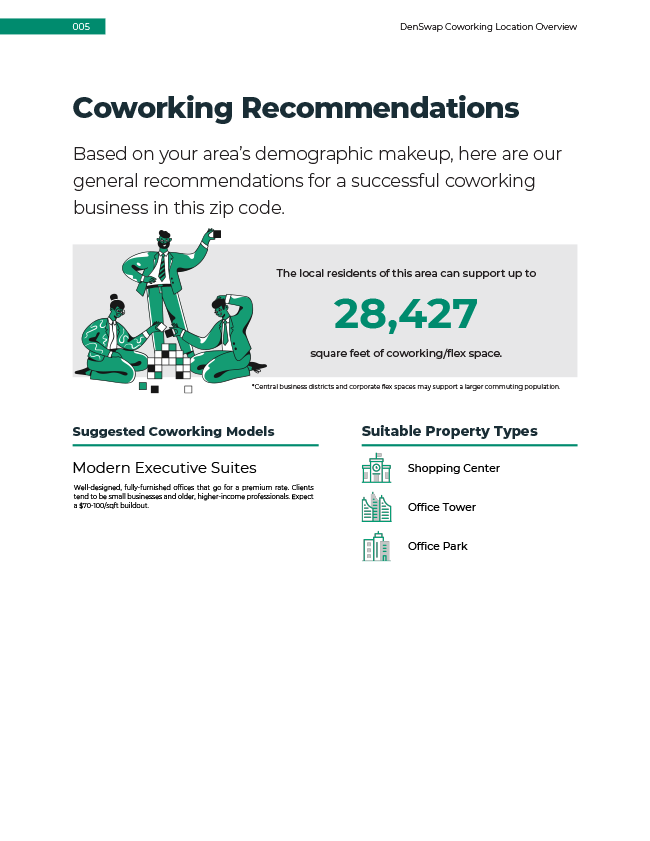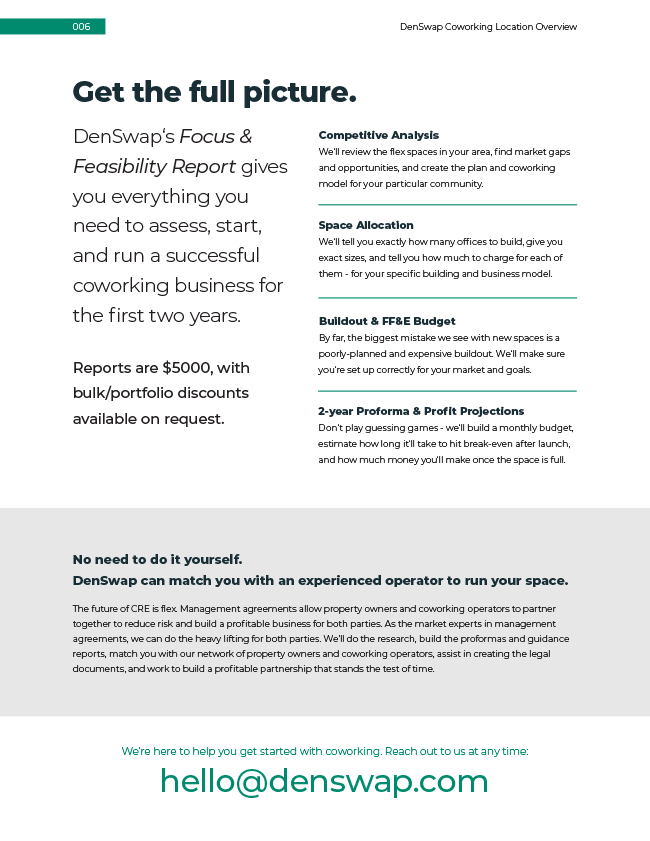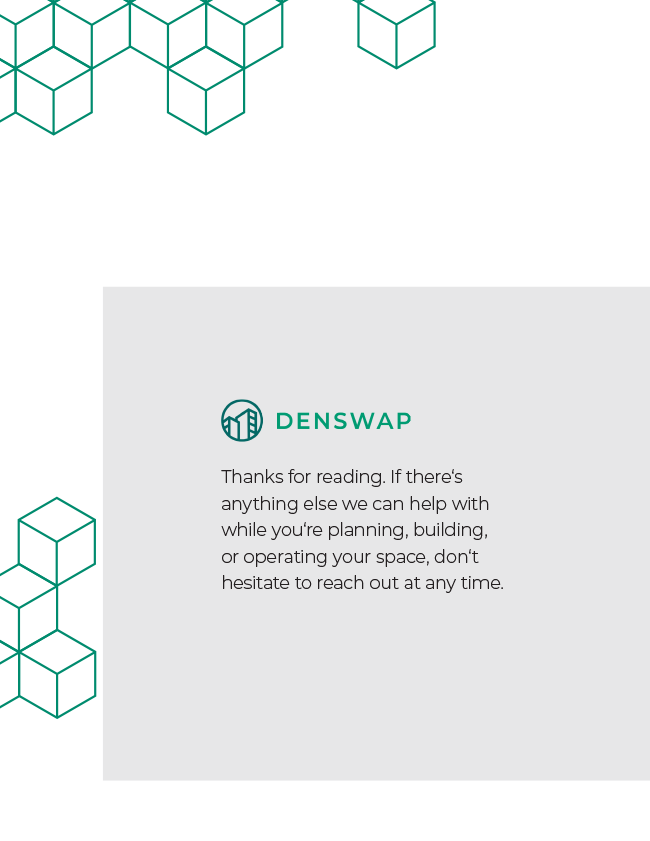How to make money with your first coworking space
Entrepreneurs start coworking spaces all the time – about two per day, actually. Quite a few of these are doomed to fail on day one. Most commonly, we see spaces that fail due to the neighborhood and size of their immediate market, having a space that is too small and can’t scale to a worthwhile level of profitability, or by taking on too much debt during the space buildout. On this page, we’re going to share some of the best practices we’ve seen over the last decade of working in the industry.
This isn’t a comprehensive list – talk to us if you’re looking to buy or start a coworking space so we can help fill in real numbers and estimates. However, if you’re testing the waters to see if coworking is right for you, this will get your started.
Buildout
Most new spaces will require a mix of shared desks/common areas and offices. This style is called the New Shared coworking style (see our Understanding the Coworking Industry article) and provides stable, profitable office space with a collaborative community feel from the shared spaces. Our biggest advice is: watch your costs and have a plan to sustainably pay off your buildout cost over a fixed time, even if the economy is bad or another pandemic sweeps through the country. There are too many businesses that have gone under because they started off by spending $400,000 on furniture that didn’t drive profits.
Your space should dedicate around 70% of its usable space to offices. Ideally you’ll have space for different office sizes, grouped together by how many people can fit into each office. Most of your offices will be 1-3 person offices, with each “person” taking up 50 sqft.
Shared desks should account for the next 30%. Desk size should be 24 by 48 inches and dedicated desks detached storage. You should also have a mix of long communal tables and accent chairs and sofas.
Conference rooms can be a revenue driver for a coworking space if the business focuses on selling it. However, most coworking spaces make conference rooms that are too large and it results in wasted space that sits empty. Over 95% of meetings are less than 6 people, and most involve 4 people or less. No matter how tempting, most coworking spaces should not build a large boardroom that fits 12 or more people, but instead have a variety of 6-person conference rooms that easily be turned into private offices if they are underutilized in the future. This makes the space adaptable to the needs of the community and prevents costly conference room purchases.
Kitchens are an expected amenity and can make a popular communal workspace. The kitchen should be an open concept that mixes with the coworking space in order to maximize efficiency. The amenities inside the kitchen should be meaningful to the target audience and your anticipated uses. Most kitchens have quality coffee machines, but the addition of stoves, espresso machines, beer kegs, or sparkling water all depend on your market positioning and target audience. We recommend you cautiously add extra kitchen amenities in order to keep startup costs manageable.
Shared Space (reception, etc) areas should be highlights of the space that welcome people and set the tone for the space. If your space has a community manager that acts like a traditional secretary then a large reception desk is needed, but a lot of spaces like their community managers to be mixed in with the community and don’t require such an expensive and dominating desk. The shared space should also have a lounge with soft seating, accent pieces, and art. In order to save on startup costs it’s not recommended that commercial grade furniture is used because it will not be used frequently. Overall, setting the tone with the look is more important than the functional use.
Buildout Mistakes
The biggest pitfalls in furnishing and building out a coworking space is incorrect office size, desk size, buying too expensive furniture, too large of boardrooms, and not having the right portion of shared to private space. We have worked on spaces that had everything right, but the expensive desks were a foot too deep and wide. The roomy desks made what would normally be a four-person office feel like a two-person office. These preventable mistakes have two negative consequences.
- The space will have difficulty actually charging market rate for the four-person office because it can’t actually fit four people, reducing the potential revenue for years to come.
- It puts people farther apart creating a stale culture. Most individuals will like the extra room but over time the space’s vibe will not be what they were expecting and eventually leave.
Furniture can be a costly mistake that takes tens of thousands of dollars to correct. Having the wrong office size is the second most common mistake that is difficult to change. Too often spaces will build out a lot of small 60 sq. ft. individual offices that mimic WeWork, but the location is in the suburbs. The suburban market requires a different mix of offices compared to downtown cores. It’s important to learn coworking best practices, talk to experts and consultants, and study your local market conditions to avoid these costly mistakes at the very beginning.
Avoid costly mistakes. We can put together a lean, profitable buildout plan with budget projections.
Get a Focus & Feasibility Report from DenSwap’s consultantsOperations & Expectations
Remember – coworking is a hospitality business. Coworking spaces generally provide an all-inclusive pricing with coffee, kitchen access, meeting rooms, mail, and cleaning all provided. The community manager needs to make sure the two most important things to a coworking are always available – coffee and strong wi-fi. Their next duty is keep the space clean and the community comfortable and engaged. A community manager should be able to efficiently manage up to 12,000 square feet of space with the right tools and processes in place.
In order to provide great service at an affordable price it’s important to add as many self-service options as possible. In order to be self-service it’s important to pick coworking management software that makes it easy for customers to book the conference room, find FAQs, communicate with the community manager, and access the building after hours. Processes should also be well documented for members to access and for community managers to follow.
A coworking space that has a well documented process and plans, software that enables services to be managed by members, and a well trained community manager should be able to keep costs low while providing a superior experience.
A good community manager should be well organized, sociable, and quick on their feet. The tasks of marketing and IT should not necessarily lay on the shoulders of the community manager and instead should be hired out.
Advertising is key, and one of the items we see failing businesses underperform on. A coworking space can have smooth operations, but if people don’t know about it then it remains empty. New coworking spaces too often have the ‘build it and they will come’ approach to sales. This used to work a decade ago but as competition has increased, it’s vital to dedicate startup and on-going operating capital to advertising. According to coworking research, Google search advertising is costly but the most effective way to get leads. Other approaches that are working according to coworking space owners are member referrals, paid social media, and SEO. Print advertising is seen as the most ineffective way to advertise a coworking space.
When starting a new coworking space, it’s recommended that the advertising budget starts with $3,000 plus $1 per square foot of space. Once the space reaches a stabilization point of 80% of office occupancy, then 3-5% of revenue should be dedicated to advertising.
Wondering what your monthly costs will be? Use our Property Planning Tool to estimate a budget.
Generate a custom property planning reportProfitability
Most coworking spaces take two years to reach profitability. This is usual for small businesses and it’s important that all small business have enough capital in the bank to last two years without any profits. Spaces reach profitability the quickest when they start advertising the space at least 5 months before opening.
Offices will be the primary source of revenue. Shared desk memberships can typically sell to a certain capacity of 2x but no farther. Conference rooms can draw in about 15% of revenue, you’ll want to use third-party services like Liquidspace, DaVinci and other services to get the word out there.
Alternate models, like podcasting studios, local classes, etc can be held in the space.
A good rule of thumb is to have at least enough offices to cover all of the space’s fixed expenses. The additional revenue of shared desks, dedicated desk, conference rooms, and virtual mail will cover your additional expenses and profit.
On average, coworking spaces bring in $4 per square foot of profit. This a broad and simplified measurement and includes the entire industry. The best way to achieve profitability is to spend enough to study the local market and find an opportunity, provide the best product while controlling cost, market the space to get the word out, but also to remain flexible with rooms so it can be adaptable. It all sounds simple, right? Starting a business always sounds simpler than it is.
Increasing Profitability
The best ways to increase profitability is to have a niche concept or market position for your space that cannot be easily commodified. You want your space to be more than space, but services or events that can leverage its community or is so unique that people can’t help to join. When talking nuts and bolts of running a coworking space at its maximum profitability, it’s important to build up sustainable repeat business that don’t require much work. The simplest and largest revenue channels are conference rooms / training rooms and virtual mail services.
Conference room rentals are more difficult to get started than nearly all coworking space owners expect. Most spaces build out large boardrooms that sit empty most of the time or serve four-person meetings when it has 12 seats. It’s wasted space because the space owners took a ‘build it and they will come approach.’ Boardroom rentals are a difficult business because it involves attracting customers that will only use your services once or possibly a few times a year. However, over time if you build up enough customers that rent the boardroom once a quarter then you have a strong sustainable business. Customers don’t switch boardrooms verys often because they are rented for important gatherings where predictability and quality is important. A customer base of boardroom renters takes time, but it can be a profitable long-term revenue driver. A daily boardroom rental is typically priced at 20% of the monthly office price for a similar sized room.
If your coworking spaces is dedicated to building up the boardroom rental business over the course of a few years then it’s easier and recommended to rent them out as offices. The same advice can be applied to training rooms.
Virtual mail services can be another profitable driver for a coworking space. If you have a desirable address then professionals and businesses may want to appear that they office at your location and a virtual mail service provides that illusion at a fraction of the cost. Virtual mail services may seem like nuisance at first when just one or two customers, but revenue can quickly add up over the years as the service goes to be several dozen or a hundred customers. In fact, according to the Global Workspace Association, executive suites get 22% of their revenue from virtual mail services. Virtual mail doesn’t require any additional space but it may require a few hours each week of staff’s time. It’s a scalable service and there are around a dozen virtual mail services that spaces can partner up with to resell your services.

Build a profitable space.
Profitability is by no means guaranteed in the coworking market. Businesses with well-run operations and shrewd planning are eating up market share and acquiring additional spaces at an amazing rate. Do the research, make a focused plan, and don’t hesitate to reach out if there’s any further help we can provide as you get started.

